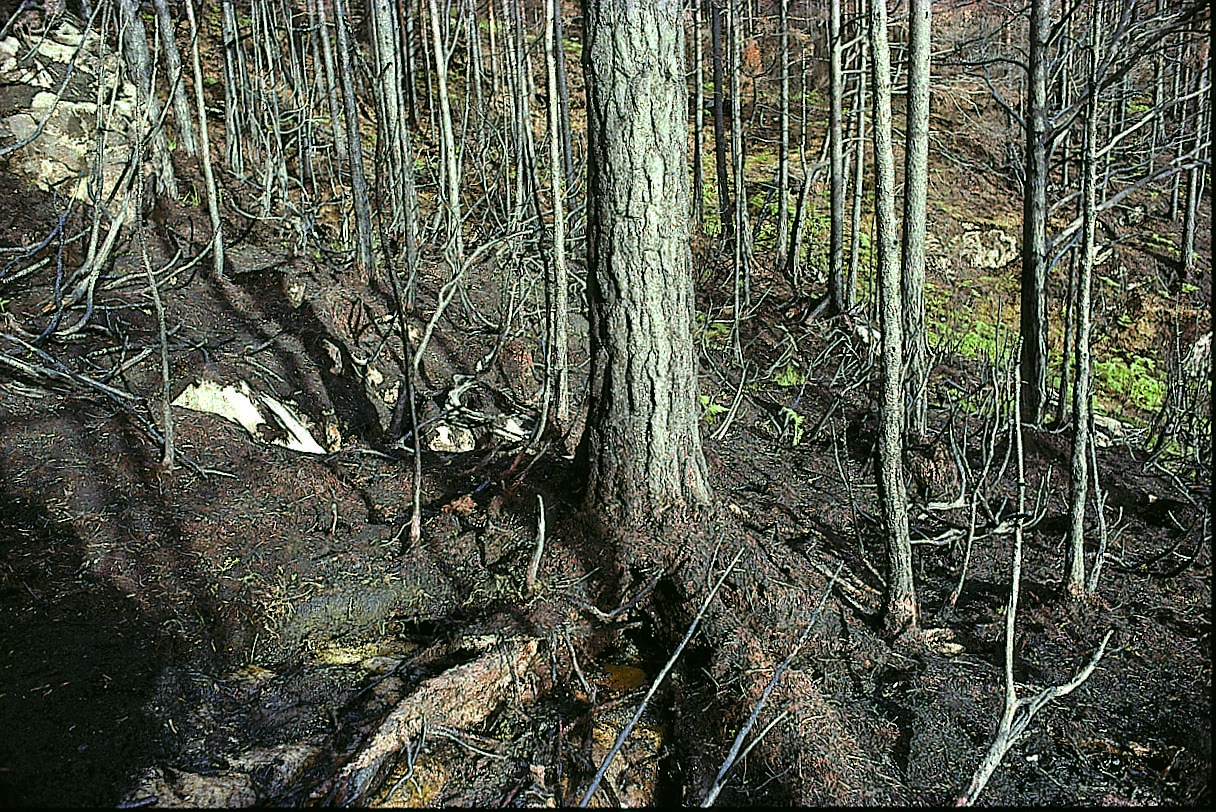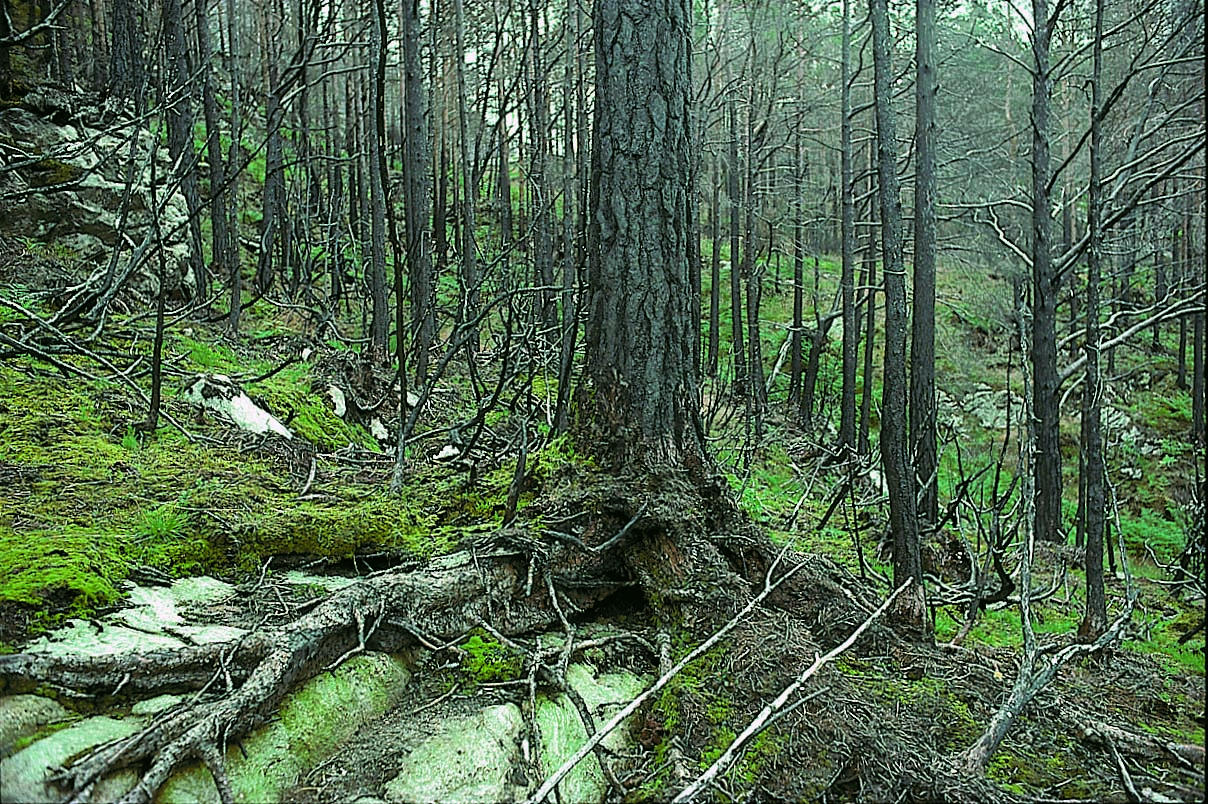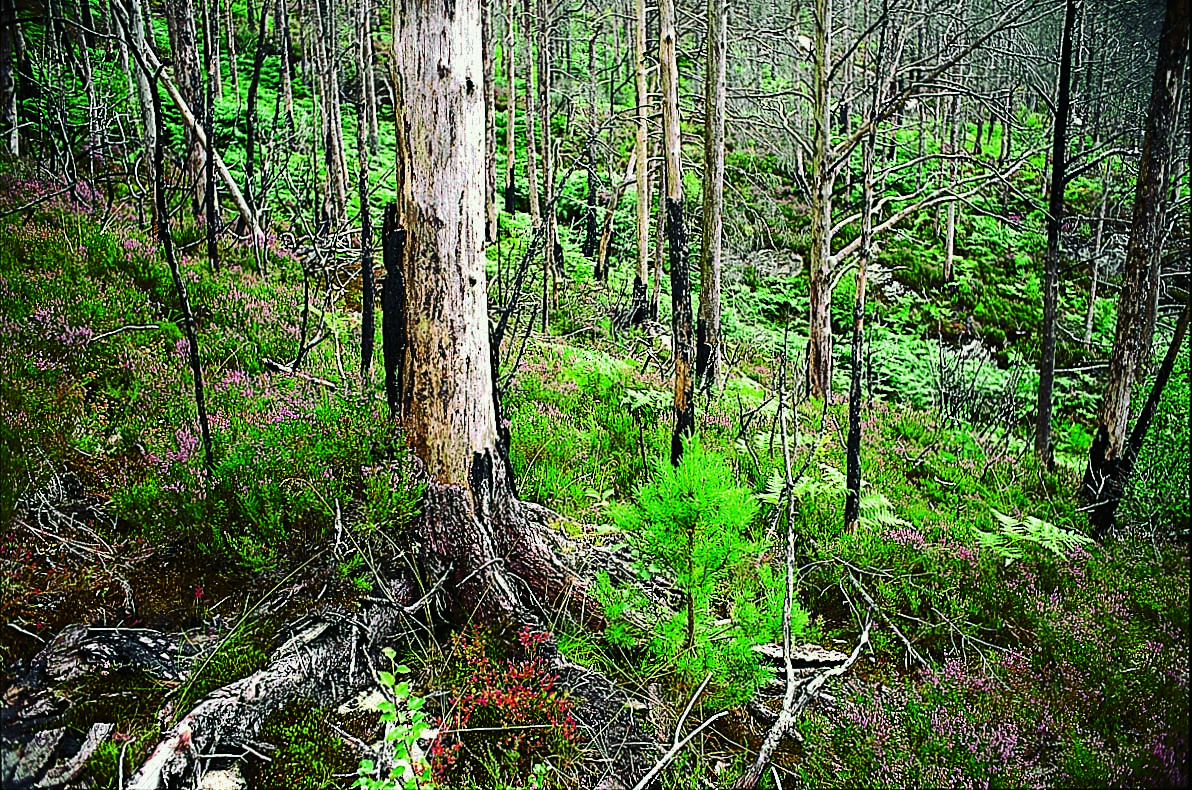Published: 17.06.2015 | Author: Bjørn Moe, Stein Byrkjeland
On June 2nd, 1992, a big forest fire broke out in Sveio. The fire started southeast of Hopsfjellet. In a strong wind the flames spread quickly northward. Houses on the other side of the highway were threatened, but escaped unscathed. The burned area, which is easily visible about a 5 minute's drive south from the tunnel at the triple- junction, was made into a nature reserve in 1998. The intention was to ensure that the re-establishment of plant- and animal life would take place without disturbance.
In this nature preserve you can get some insight into the fight for survival when a big forest fire changes the living conditions for the vegetation. Here it pays to know one's time and place. The first plants to re-colonize are called "pioneer species". They spread effectively under good light conditions and can grow freely without competition from other vegetation. Several moss- and fungi species grow back quite quickly, but they do not thrive and disappear after just a year or two. Many plants will be able to survive a forest fire because roots and rhizomes lie well-protected under the ground. They have to re-establish themselves after a fire, but are not dependent on seeds or spores in order to grow back. Adderspit, bluberry, mountain cranberry and heather are examples of species that survived in the ground many places in Hopsfjellet. Common heather has in addition spread effectively by producing large quantities of seeds, and this was the most common plant in the burned zone after the forest fire.
On rainy Westland, forest fires are much more seldom than for example in the eastern part of the country, because it takes a lot longer here for the ground to become dry enough. If the conditions on rare occasion should be suitable, a forest fire on Westland could be quite intense, because in many places large amounts of humus (dead organic material) have accumulated. In addition, the vegetation often consists of dense mats of heather and juniper, which spread the fire effectively both along the ground and upwards along tree trunks. It is first and foremost pine forests that are susceptible to forest fires, since they are open and are dominated by species that tolerate much dryness, especially heather and moss. But, the thick bark protects the pine tree, and many survive as long as the crown of the tree doesn't catch fire.
The fire in the pine forest on Hopsfjellet started during a warm, dry period and was quite intense. It didn't burn the same amount everywhere, and some areas remained that were less damaged. 20-30 years after the fire a new forest will grow up from the burned area, mostly pine, but there will also be areas of deciduous forest and birch, willow and some aspen. The absence of juniper is noticeable and will for several decades distinguish the forest on Hopsfjellet from other pine forests. The charred trees will be visible in the landscape for a long time as barkless, greyish-white monuments. Some of the trees will remain standing, while others will lie on the ground and perhaps become covered by fungi and moss.
With a nose for the fire zone
Just as there are fire-specialists among the plants, who colonize first after a forest fire, there are also some animals - especially insects - that are dependent on forest fires in order to survive.
Some beetles seek the fire zone with the help of sense organs that can register infrared radiation! There are several forest fire-specialized insects by Hopsfjellet today. One example is the ground beetle Pterostichus quadrifoveolatus and the trebast beetle. After a time, these must give way for other species.
The changes in the birdlife as time goes on are easier to register. Typical species for an early stage after a forest fire are the yellowhammer, tree pippit and redwing, and woodpeckers have an easy time finding any food that is to be found in the charred tree stumps.
- Bleken, E.; Mysterud, I.; Mysterud, I. (red.). 1997. Skogbrann og miljøforvaltning: En utredning om skogbrann som økologisk faktor. Direktoratet for brann- og eksplosjonsvern og Biologisk institutt, Universitetet i Oslo.
- Moe, B. 2001. Vegetasjonsutviklingen etter skogbrannen på Hopsfjellet, Sveio kommune i perioden 1992–1999. Fylkesmannen i Hordaland. MVA-rapp.3–2001.
- Thunes, K. H. 1993. Billefaunaen i brent skog, en faunistisk undersøkelse fra brannfeltet i Sveio. Zool. Mus., UiB,Rapp. terrestrisk økologi. 21 s.







